The cathedral of speed, the temple of history. Monza is the reason why the Ferrari clubs exist – it’s the home of Ferrari fans. If you have never been to Monza Grand Prix, you cannot really call yourself a Ferrari “tifoso”. Here the prancing horse roars louder, here the Ferrari pilots go faster, here, when Ferrari wins, everything falls apart.
He who drives a Ferrari in Monza doesn’t forget it, he races among two howling red walls, the Ferrari arena. There has always been a special Ferrari for Monza, Enzo Ferrari personally took care of her. The podium is the best ever, a lifelong emotion; Monza gets in your blood. With the roar of the Ferrari engine and the screams of the fans, the pilot can’t feel anything else, he drives in heaven, and to push him there is Gilles, there is Michael, there are all the great Ferrari drivers. At Monza they race every year, and Enzo Ferrari is still the boss. Nothing has changed. Here is where Ferrari was born and it has always been. Who wins in Monza is a Ferrari tifoso forever.
The crowd at Monza cheers long and loud when Ferrari wins. “The podium at Monza,” said Vettel, “is always special, but to celebrate it with Ferrari is something unique. Seeing all those fans there for us was an incredible boost that reminded me that I am not alone. Almost all of Italy was for us. It is like having a super power.”
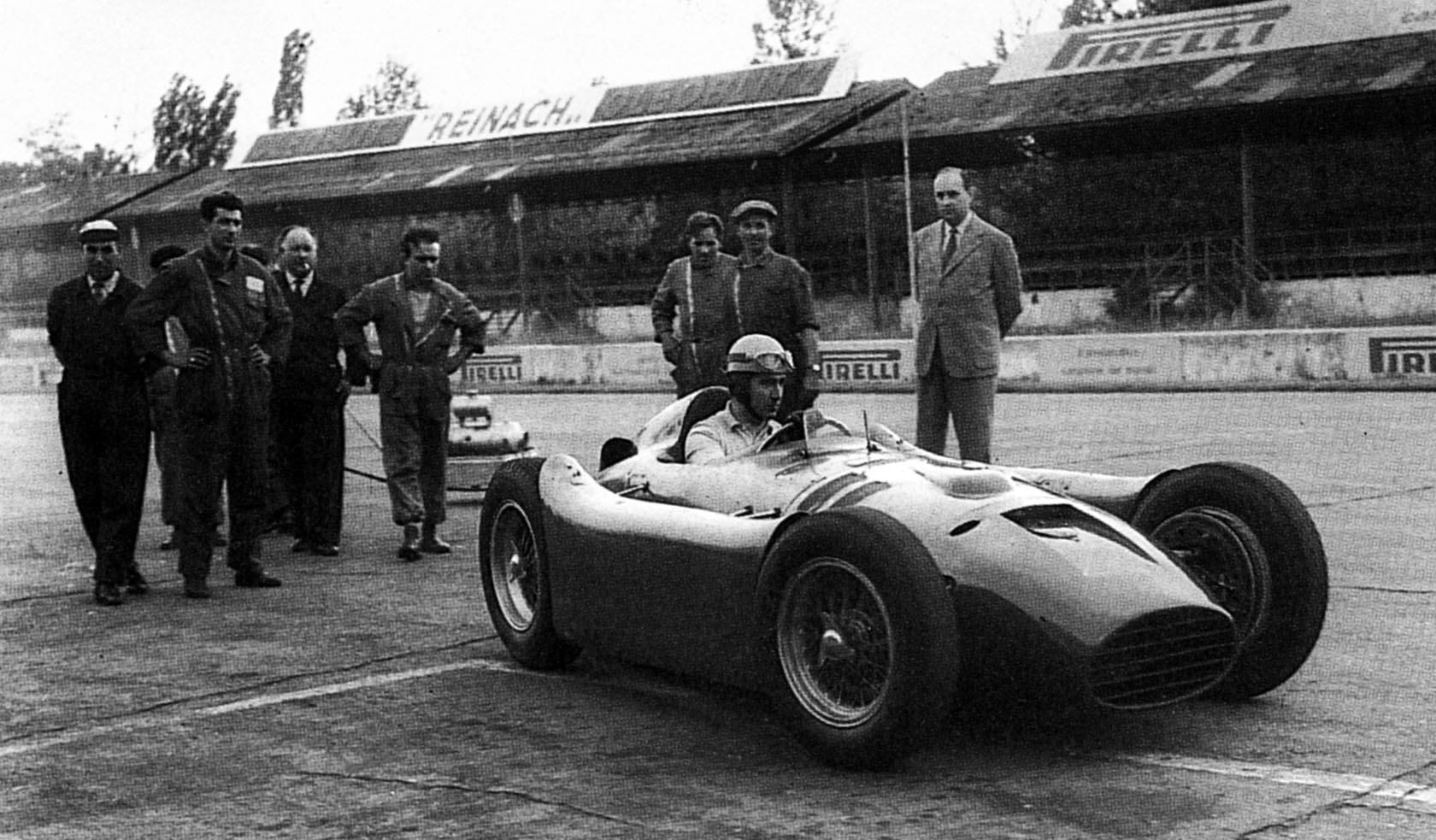
Ascari in his Lancia at Monza in 1954.
“It’s what we’re here for. You stand on the grid, you look to the left, you look to the right, people are just happy to be part of it and it makes our day. As simple as that. It’s incredible. It’s one race all grand prix fans should try to see.”
The Autodromo Nazionale Monza is a race track built in the Royal Villa of Monza park, Italy, in a woodland setting. The site has three tracks – the 5.793-kilometre (3.600 mi) Grand Prix track, the 2.405-kilometre (1.494 mi) Junior track, and a 4.250-kilometre (2.641 mi) high speed oval track with steep banking that has been unused for many decades and is now decaying.
In 1954, the work to entirely revamp the circuit began, resulting in a 5.750 kilometres (3.573 mi) course, and a new 4.250 kilometres (2.641 mi) high-speed oval with banked sopraelevata curves. The two circuits could be combined to re-create the former 10 kilometres (6.214 mi) long circuit, with cars running parallel on the main straight.
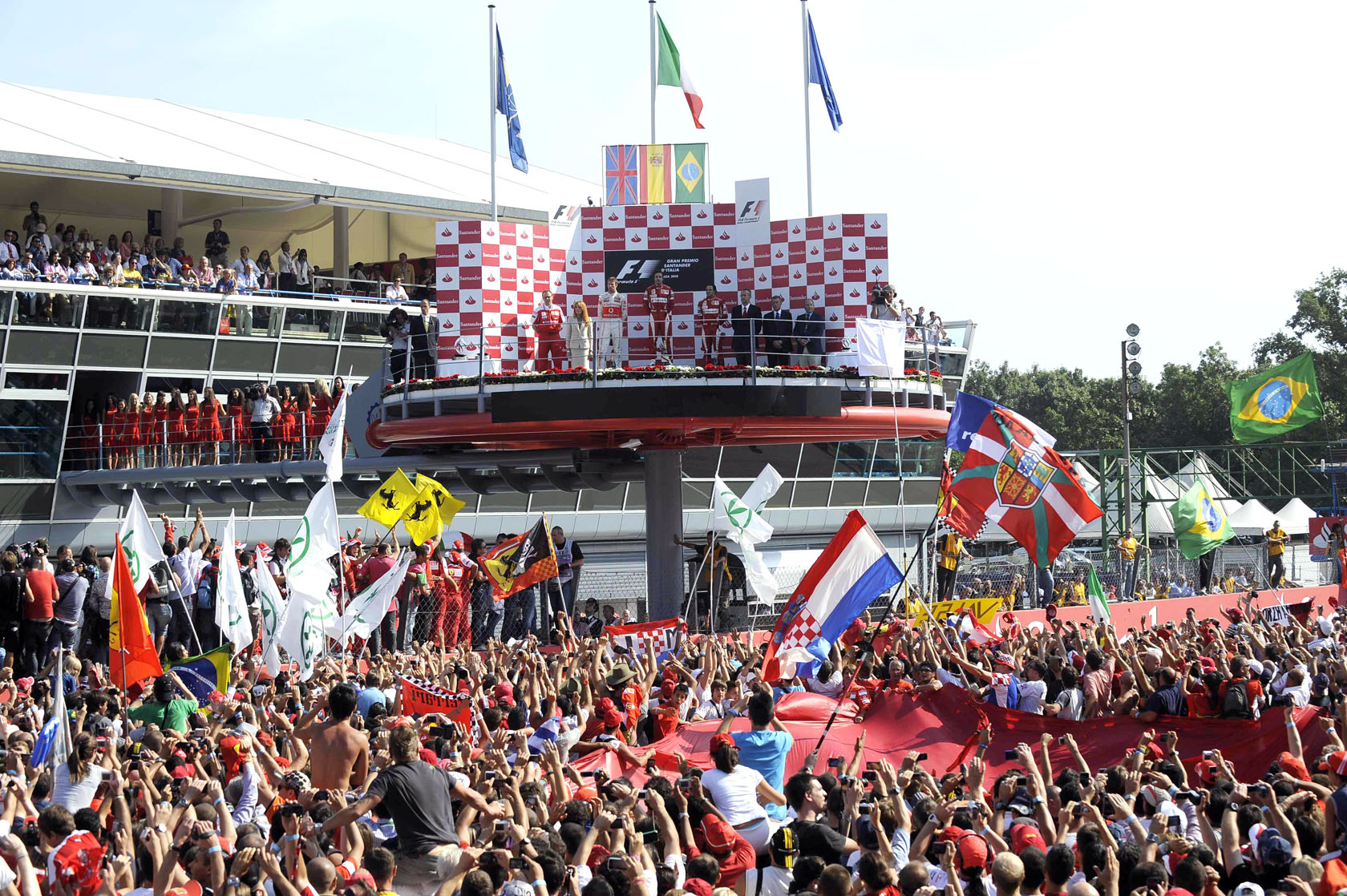
The podium at Monza in 2010.
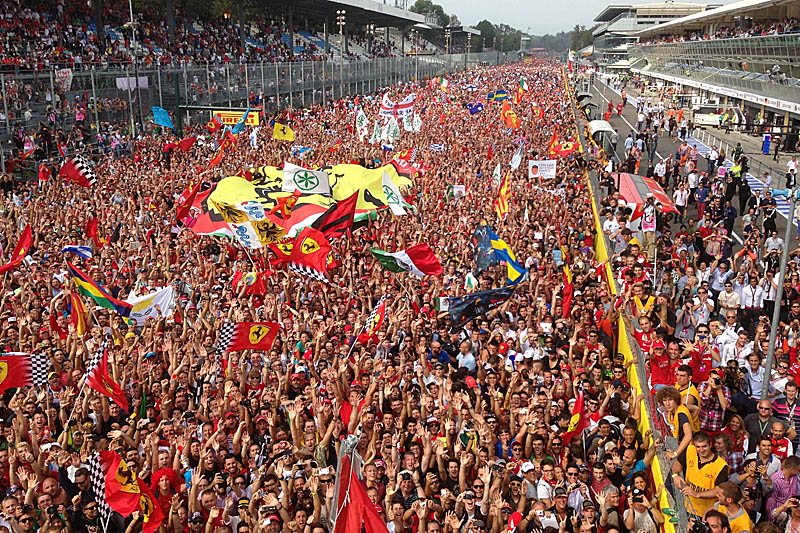
Ferrari fans at Monza in 2014.
Monza consists of very long straights and tight chicanes, putting a premium on good braking stability and traction. The circuit is very hard on gearboxes, with many gear changes per lap. Formula 1 engines are at full throttle for nearly 80% of the lap. Cars are set up with one of the smallest wing angles on the calendar to ensure the lowest level of drag on the straights since there are only 4 proper corners, the two Lesmos, the Ascari complex and the Parabolica.
The circuit is generally flat, but has a gradual gradient from the second Lesmos to the Variante Ascari. Due to the low aerodynamic profile needed, with its resulting low downforce, the grip is very low; understeer is a more serious issue than at other circuits; however, the opposite effect, oversteer, is also present in the second sector, requiring the use of a very distinctive opposite lock technique. Since both maximum power and minimal drag are keys for speed on the straights, only competitors with enough power or aerodynamic efficiency at their disposal are able to challenge for the top places.
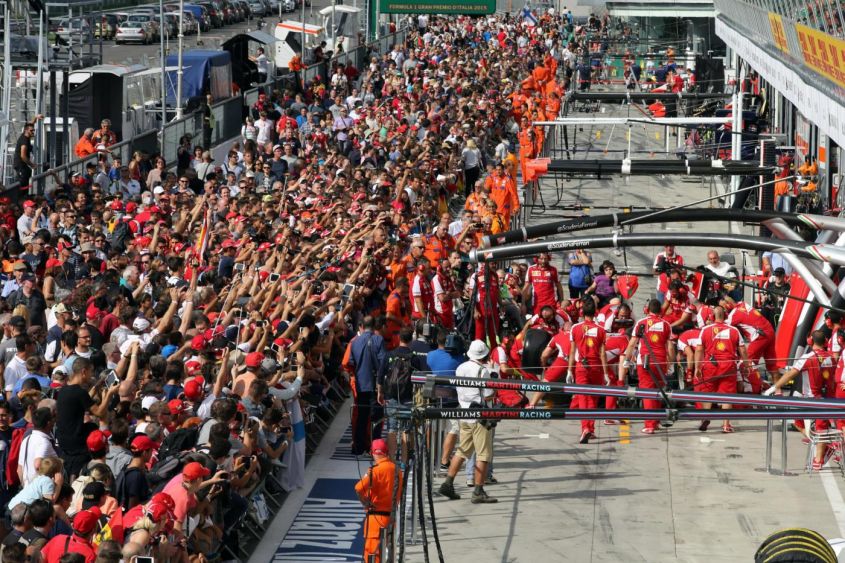
Ferrari fans at Monza in 2015.
Engine performance has a greater effect on lap time than aerodynamic downforce. The teams run special low-drag (flat) aero kits to allow them to hit top speeds over 30 kph higher than any other track on the calendar. The track is also located just 200 kilometres from Ferrari headquarters in Maranello and is always packed full with Tifosi.
Unlike Spa or the German circuits of Hockenheim and the Nurburgring, Monza retains much of its original layout. The circuit was built in 1922 and took just 110 days to complete, using 3,500 workers. That original construction included the full road course, as well as the banked oval. The Italian Grand Prix is Ferrari's home race. As the oldest and most popular team on the grid, the grandstands at Monza are always full of Ferrari red. The passion of the Tifosi makes for a special atmosphere. Most other races feature support split among many teams and drivers. In Italy, the focus is on Ferrari, regardless of who is driving the cars.
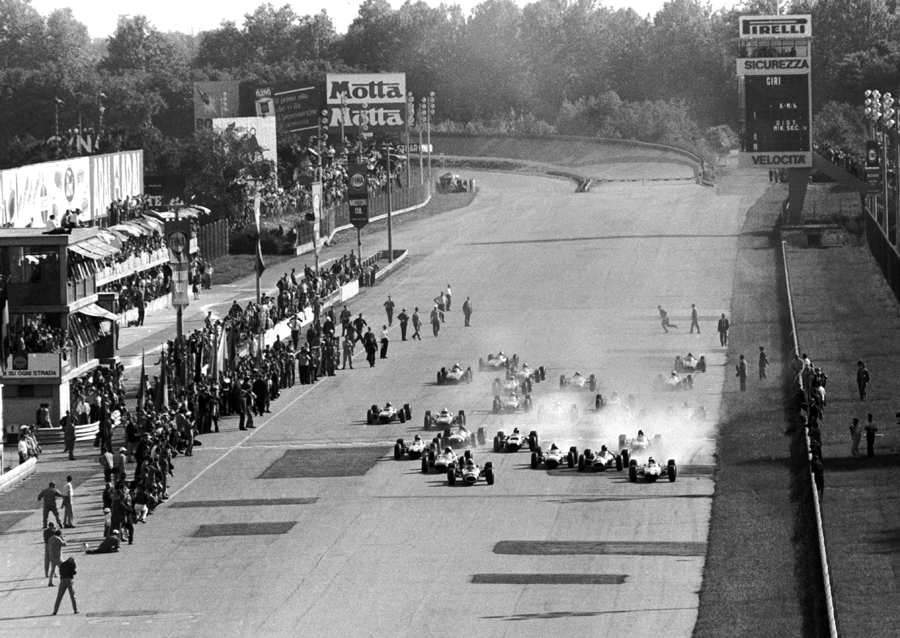
The Monza Grand Prix in the 1960s.
Monza is the fastest circuit on the calendar. And a dangerous one. In his 1961 book Cars at Speed, Robert Daley called Monza the "Circuit of Death"—and with good reason, as the circuit has been the site of many fatal accidents, especially in the early years of the Formula One world championship; it has claimed the lives of 52 drivers and 35 spectators.
With its nine decades of history and the unique passion of the Ferrari-mad Tifosi, Monza would feel special. Situated in a huge, old park, the surrounding roads are buzzing with locals jogging, cycling and dodging this midday heat beneath its vast trees. The highlight of the weekend is the podium ceremony. Mexico may have since upped the stakes in this regard, but Monza may still be the ultimate when it comes to fan interaction. Monza’s atmosphere adds something unique to the F1 calendar.
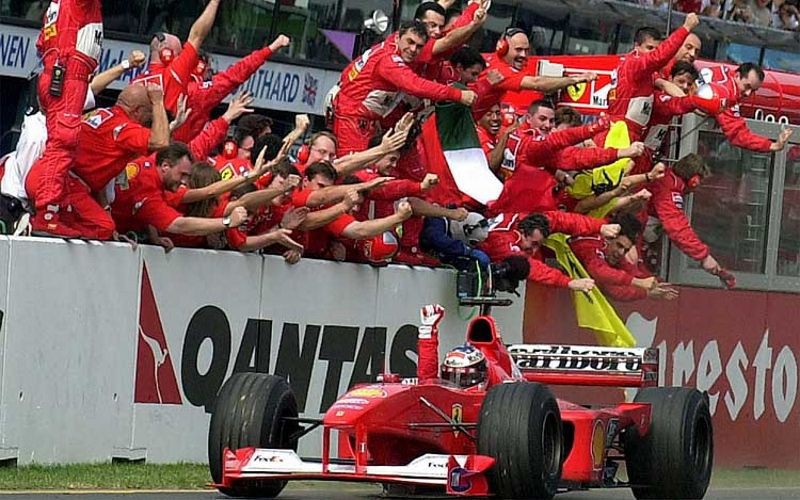
Michael Schumacher in his Ferrari.
The modern Formula One tracks are a homogeneous bunch, resembling each other in length, corners and character. For the first few decades of the championship, circuits were far longer than we see today. Nowadays, circuits no longer than 7 km are recommended by FIA, so Monza is unlikely to be surpassed as one of the longest in F1 history.
From 1955 to 1961, the Monza circuit used a layout that combined both the traditional blast through the forests and the steeply banked oval into one giant lap. The result was a terrifying, flat out, 10-kilometre figure of eight circuit. The banking was used for F1 on only a few occasions, till Wolfgang von Trips, with Ferrari, crashed into the crowd at the Parabolica, getting killed along with 14 spectators.
By 1967 time was running out for Monza’s original, chicane-free layout. Five years later the cars no longer had an uninterrupted run from the start line to the Curva Grande, and the days of spectacular oval-style slipstreaming races were over. Long Monza and Old Spa-Francorchamps will keep on being brilliant tracks to drive in the epic F1. When men were men! The opening sequences of corners at Monza went through various iterations before the current slow chicane was adopted in 2000.
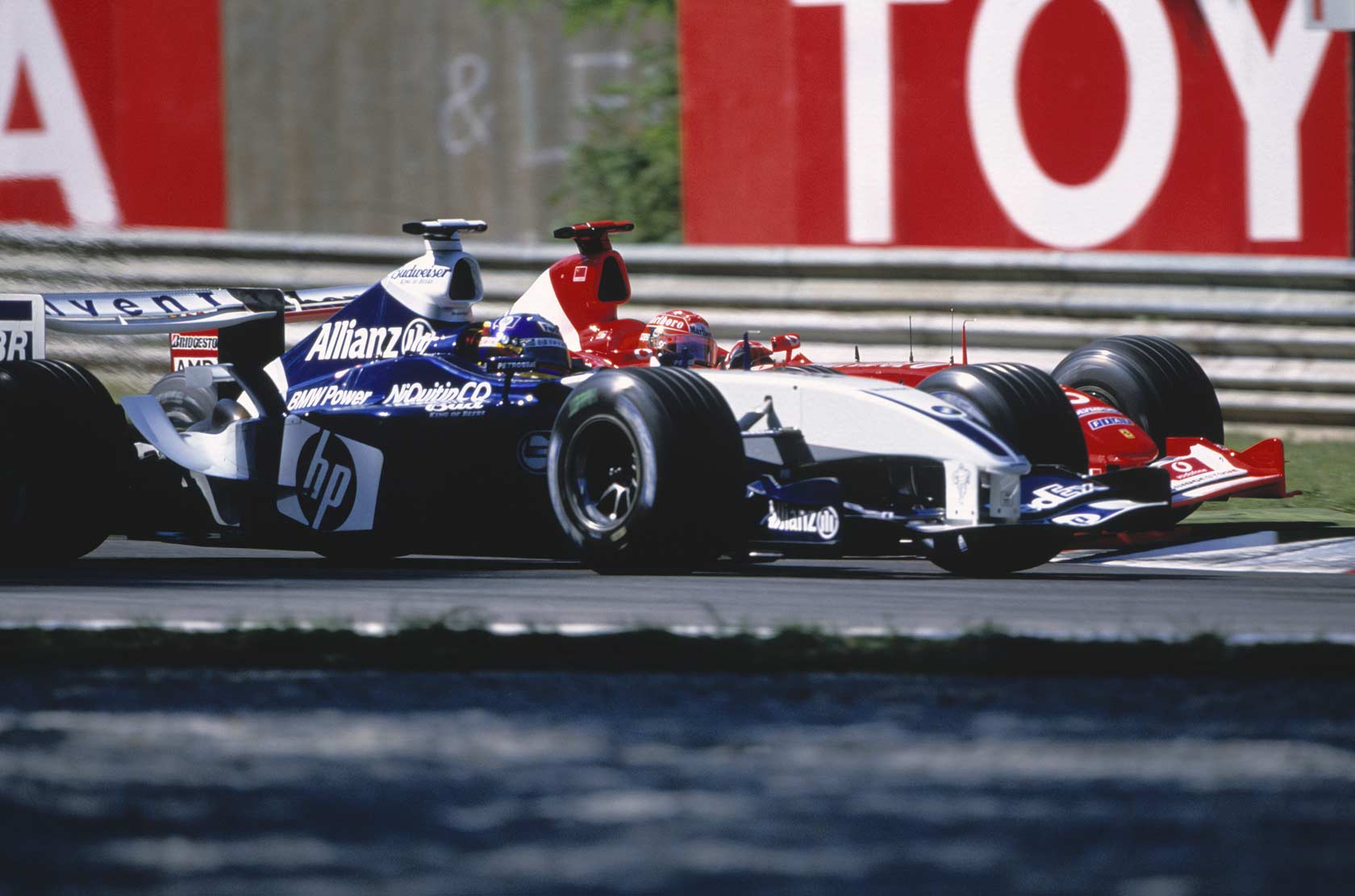
The duel between Montoya and Schumacher in 2003.
Historic Monza, the granddaddy of the F1 calendar, positively oozes atmosphere. With its long straights and the highest average speed lap on the calendar, this is one of the most dramatic places to see F1 cars in action. It adds up to a ‘must-see’ race for any Formula 1 fan. Another traditional feature is the post-race track invasion and podium celebration. The “Parco di Monza” is superb, one of the most beautiful parks in Europe. And, I can’t say this enough, do check out the banking. Also, keep an eye out for any evidence of this strange ‘part-road, part-oval, plus lots of chicanes’ configuration from the thirties. Walking the track and the oval is just icing on the cake, the race would be a bonus.
I remember reading in a book of how the author went on a stroll around the old banking and noticed a small flower growing through a gap in the road. He picked it and thought “Nuvolari raced here”, taking it home and pressing it in a book. That says everything about Monza. More than a great track for motor sports, it’s a venue where passion is everywhere. Running down the track and being part of that sea of tifosi is a MUST!
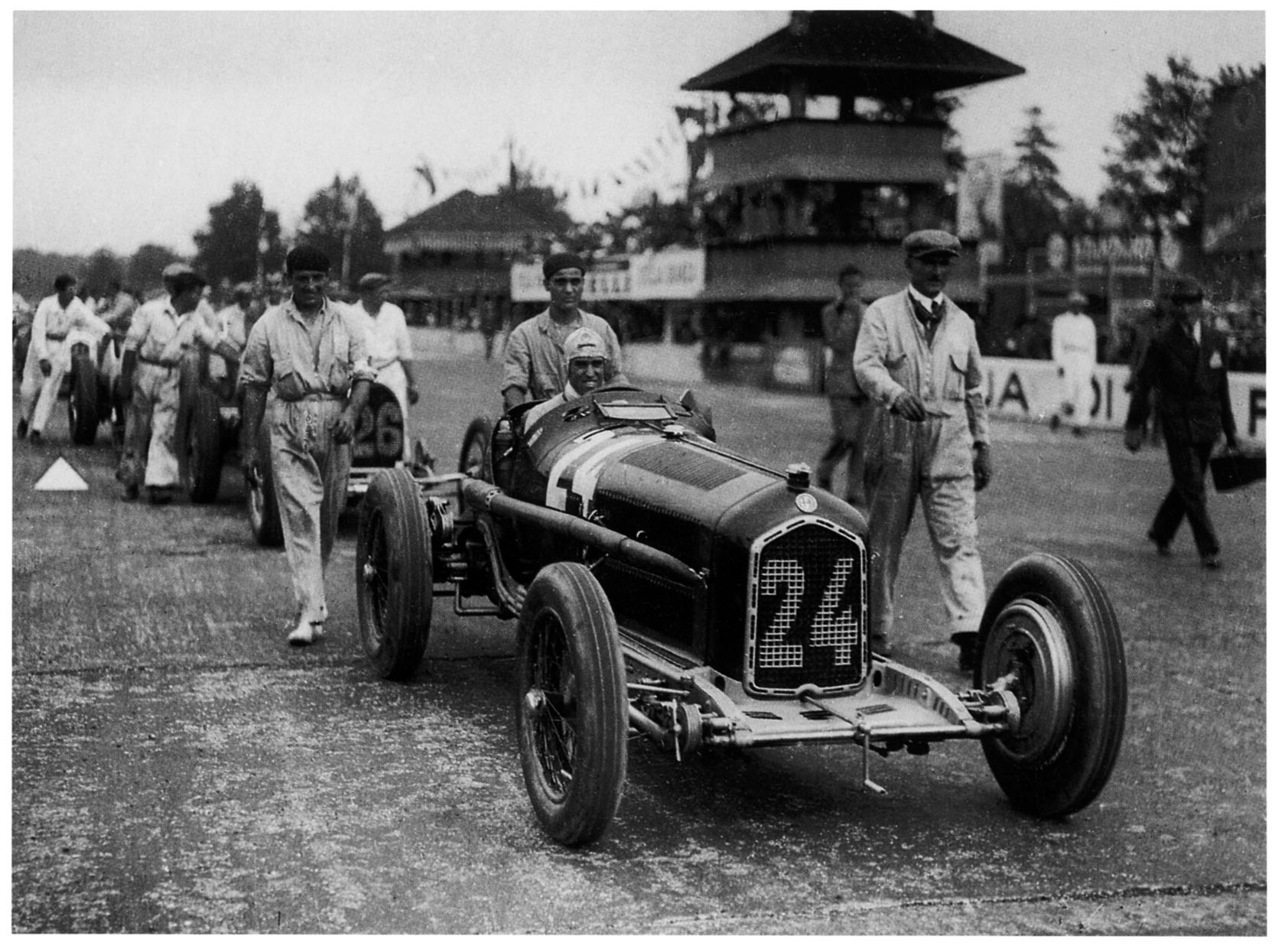
Tazio Nuvolari, Alfa Romeo, at Monza in 1932.
Monza is the Grand Prix to go to more than any other. That isn’t just because of being a Ferrari fan – it’s because it’s a time capsule of motor racing itself. The history, the atmosphere, the layout, the setting – everything about it makes it special, even compared to other historic venues. If I could like circuits to the human body, Monaco would be the head, Spa would be the muscles and Silverstone the reproductive system. Monza – absolutely – is the heart. We still remember in 1992, F1 free practice in August, before the race, Senna counter-steering out of the Ascari!
Lewis Hamilton pointed out the Monza race is regularly well-attended while others struggle to draw a crowd. “I think it’s important just not to forget that the sport wouldn’t really exist if it wasn’t for the fans; there are tracks we’ve been to where there’s been no one in the grandstands.” Jenson Button added the Italian circuit is “an iconic race track, one of the old-school tracks.”
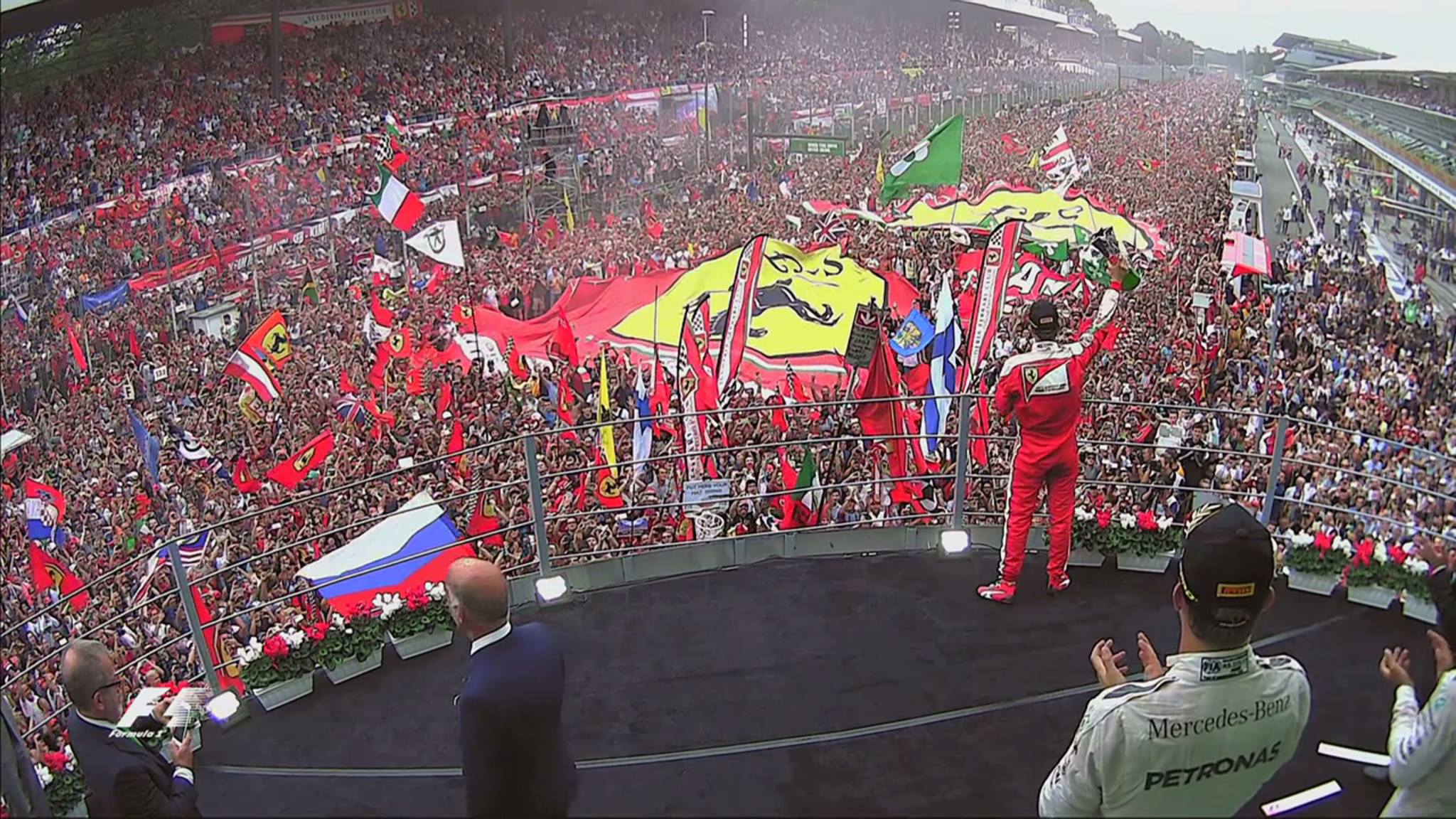
Sebastian Vettel on the podium at Monza in 2016.
“There’s so much history,” he added. “The fans absolutely love the sport, they’ll do anything for the sport. They’re not going to be there to support us, they’re there to support a certain team, but that’s great to see, it’s nice to see their passion, they’re patriotic. And the circuit’s fun to drive. It’s a very unique circuit, it’s very different to any other, very low downforce. Always throws up a good race.”
But the best tribute to Monza has given by Mark Webber: the Australian has declared that, if he had to choose a Grand Prix to attend live, he would choose Monza. This because of the public, of the atmosphere, but also for the track, so different from the others. “The fans also arrive to climb trees, billboards and even the sopraelevata of the historical ring of speed. It’s always great to come here: when you are in a place that breathes motorsport, it gets under your skin and leaves a mark on you. If I had to recommend to someone a race to attend, I would absolutely choose this, without hesitation. This even though I have never gotten great results in Monza, since I have never stepped to the podium.”
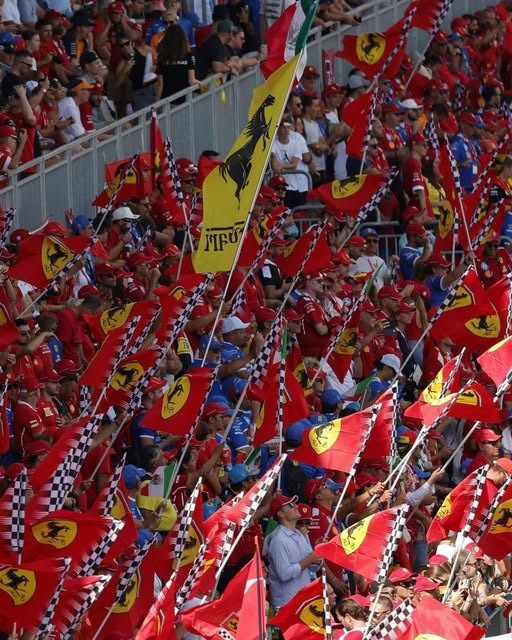
Ferrari fans at Monza in 2025.
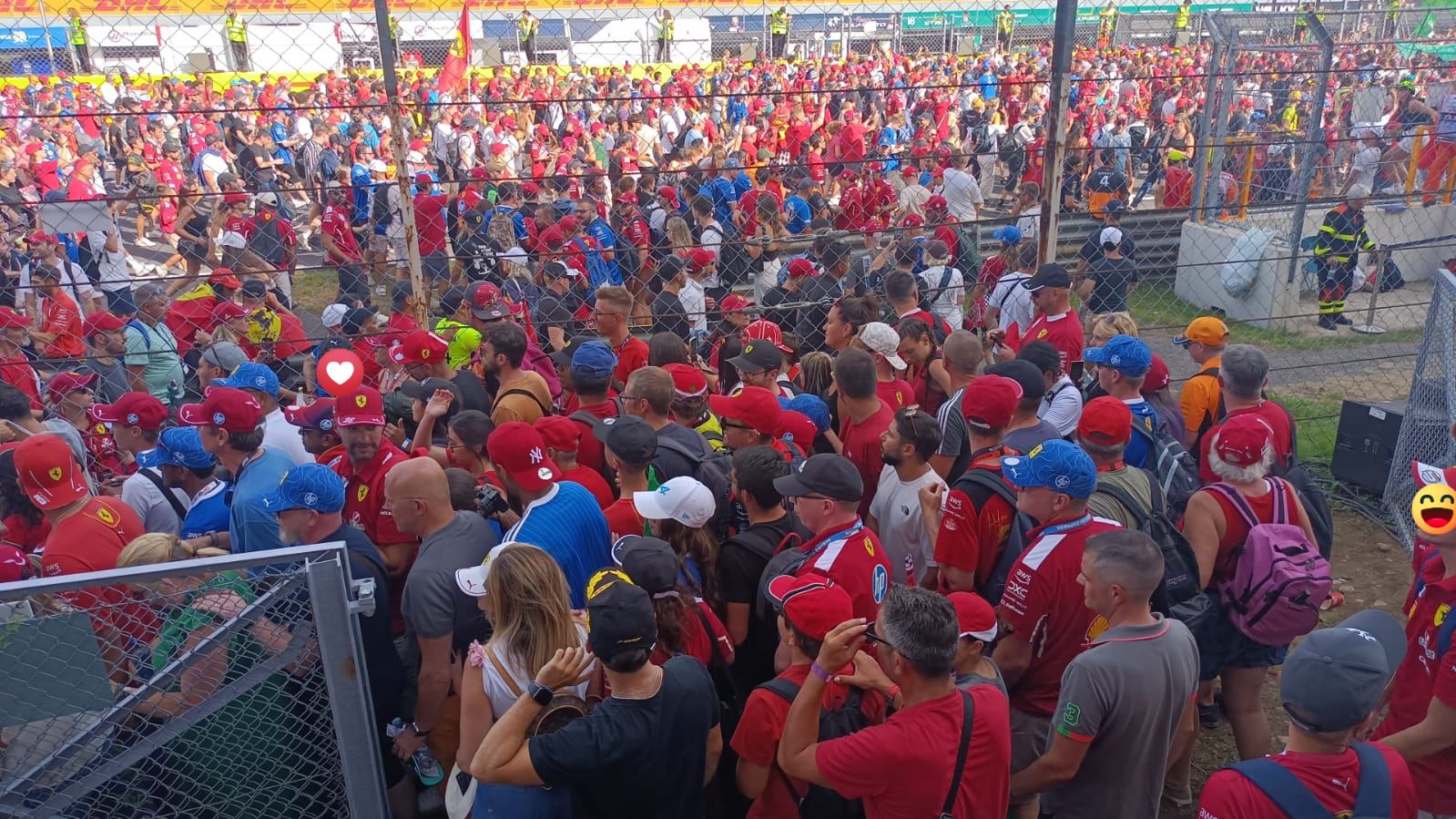
Ferrari fans at Monza in 2025.
Videos



Comments
Authorize to comment